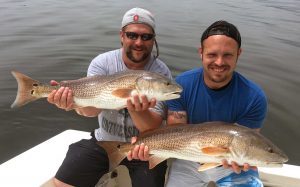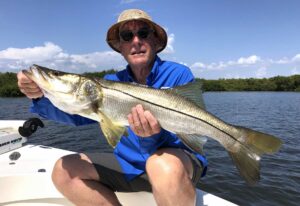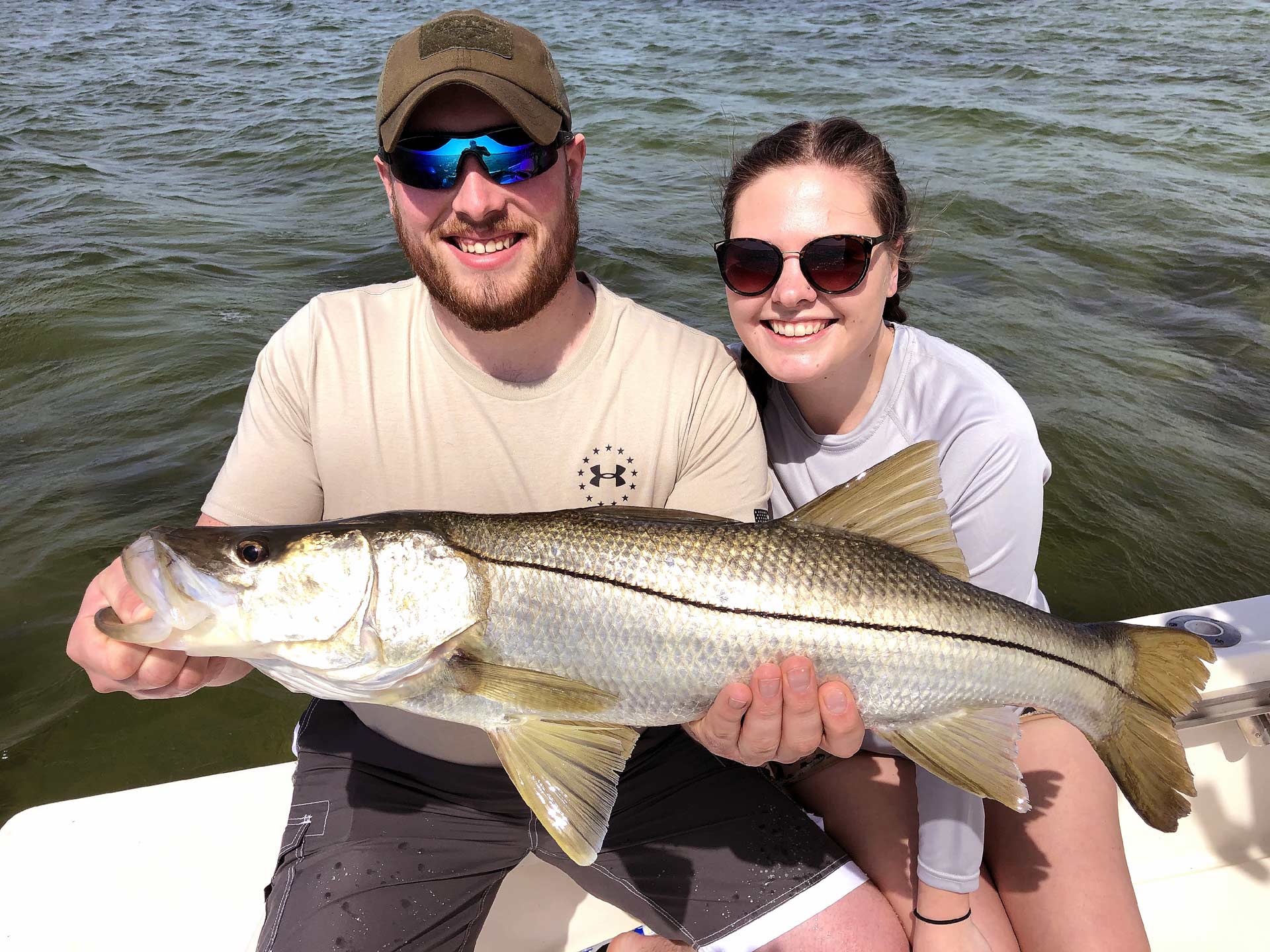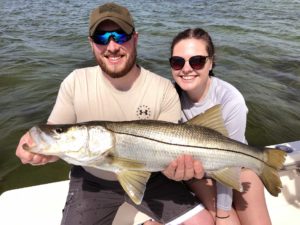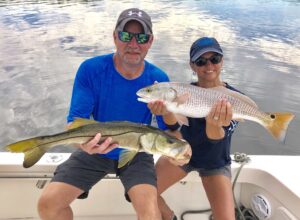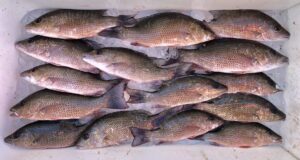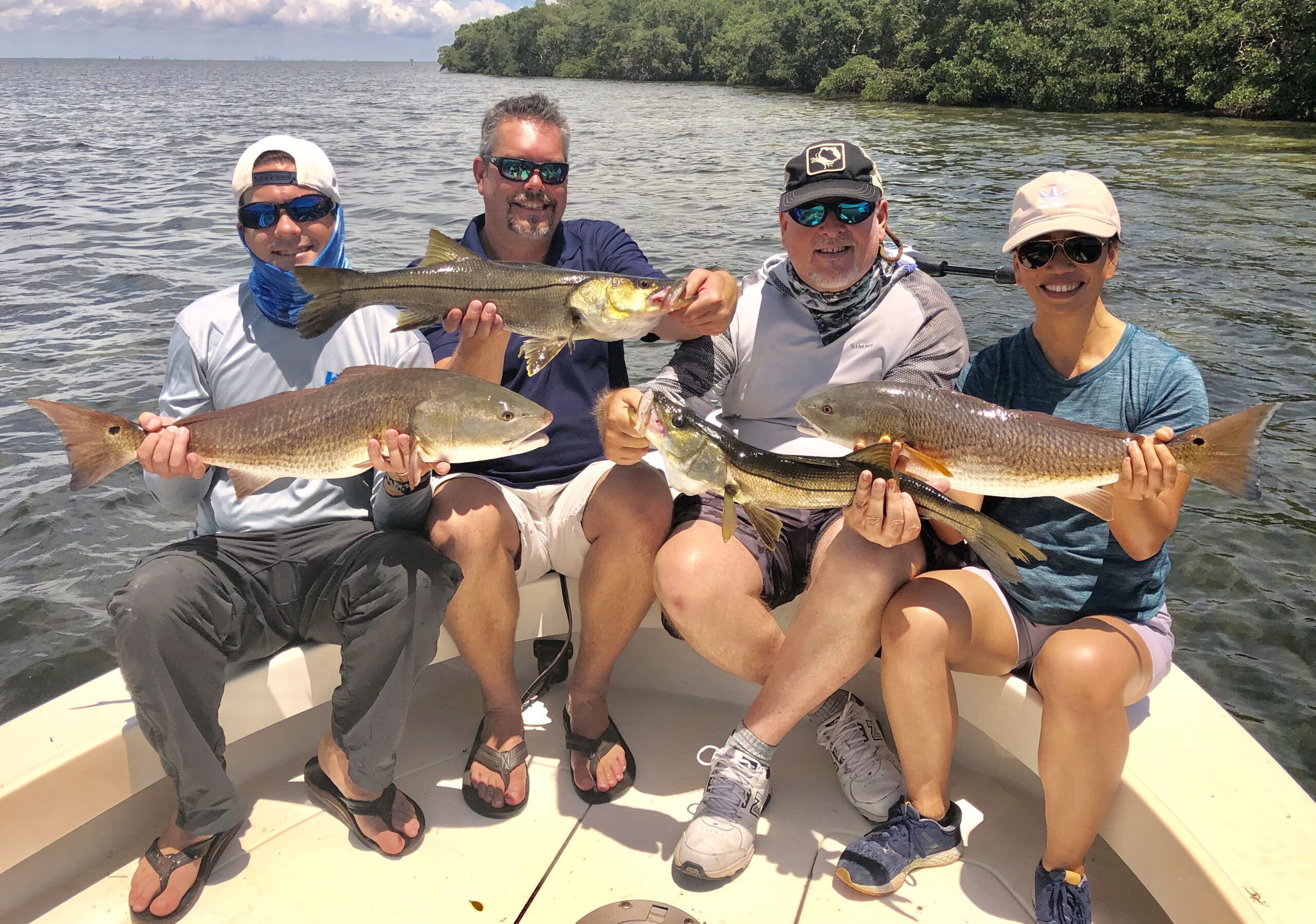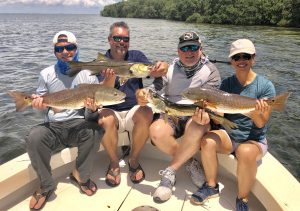Winter Tides Are Extremely Low!
Winter tides are the lowest of the year. Due to that fact, many days I don’t even start my charters until noon or later. That doesn’t mean I get to sleep in, oh contraire. Most of the time, I’m still up hours before dawn and on my bait spot before the sun breaks the horizon. That’s because there are days as the sun rises, the bait disappears.
So, what do I do for the next four or five hours before my clients arrive, you ask? Scout. Winter low tides are and excellent time to find new fishing spots where fish like to hole up. Even after the water rises, many fish will continue to use these locations as their core area. With that in mind, I either mark the spot on my GPS or remember a nearby landmark.
Over the years, I’ve discovered areas that hold hundreds of fish during extremely low tides but are inaccessible. So, unless you’re fishing out of an airboat, you must wait for higher water. Once you’re in, it’s like “shooting fish in a barrel.”
If your schedule only allows you to fish a negative low tide, there are still fish to catch and power plant outflows are the perfect location.
One good thing about the power plant outflows, the water discharge warms up the water hundreds of yards out on the adjacent flat. these areas attract sharks, cobia, redfish, snook, trout, pompano, ladyfish, jack crevalle and even an occasional permit. I’m sure I’m leaving a few species out, but you get the point. It’s a fish magnet!
Back to the afternoon tides. By now the water has risen by a foot or more making it possible to access some of my prime snook fishing areas. Once in, using my trolling motor, I set up. Then it’s fishing as usual. I chum I little bit and wait. As the tidal flow disperses the baitfish, the fish began to respond, and the rest is history.
There are many days, during the winter when you can catch 50 or more snook. Occasionally, there are days when it’s possible to catch one hundred or more. That’s why I founded the “100 Snook Club.” Charter parties that exceed the 100 snook catch and release threshold on any given day automatically become members.
The Afishionado Guide Services’ “100 Snook Club” has been so successful, this year I started a new campaign. Every new member of a fishing party that catches over 100 snook combined, will receive a free t-shirt with the “100 Snook Club” logo.
You could be next!







